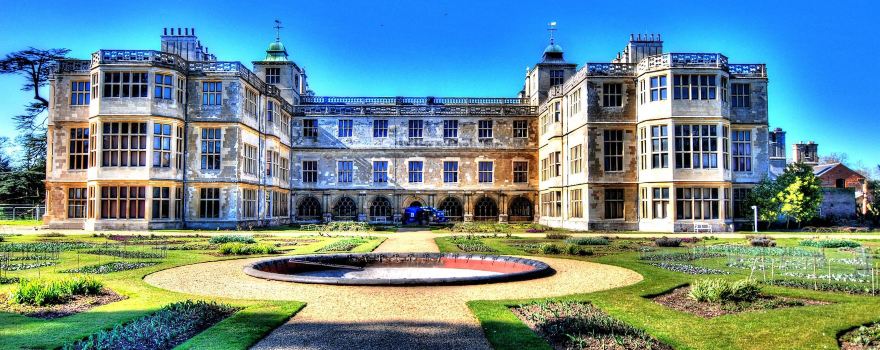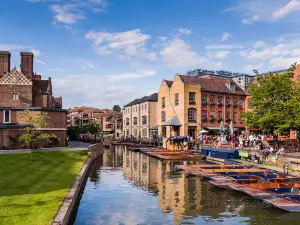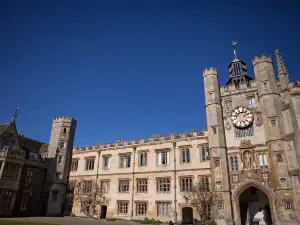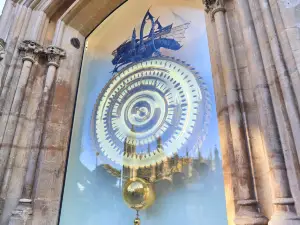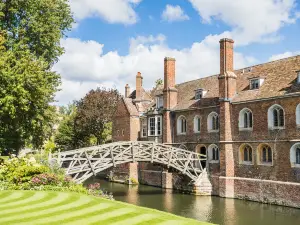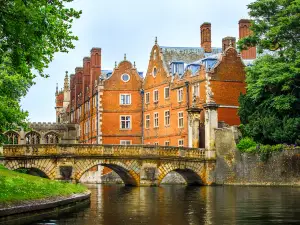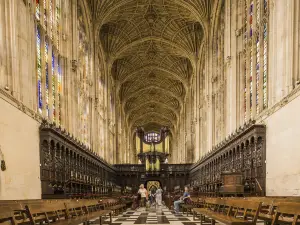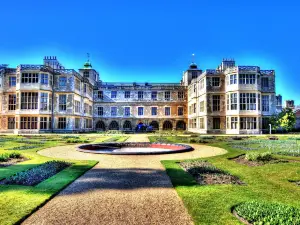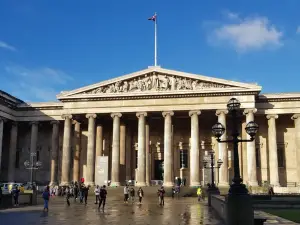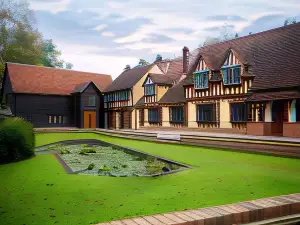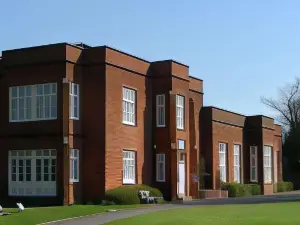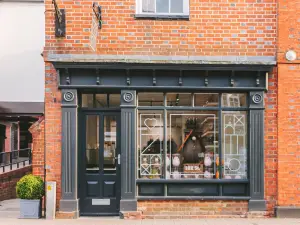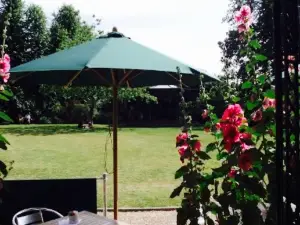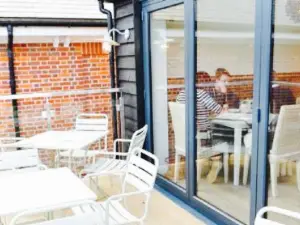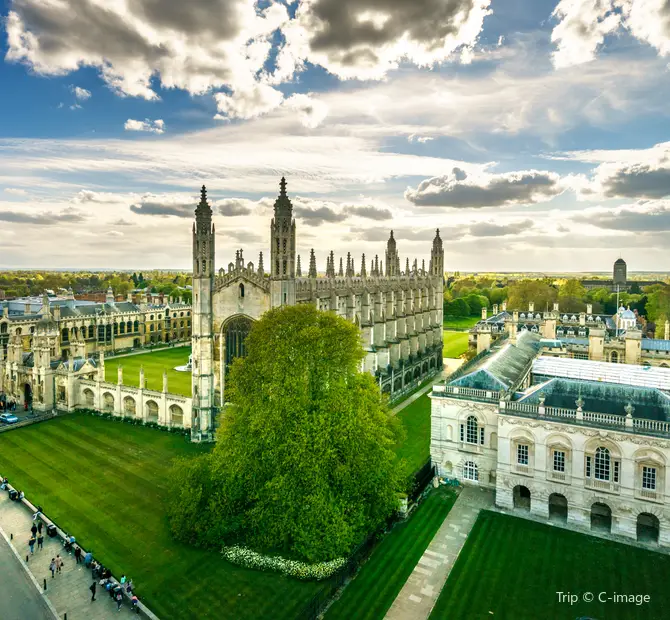Photos
Saffron Walden
2025 Saffron Walden Travel Guide: Weather, Transportation, Popular Attractions, and Everything You Need (Updated 2025 3)
About Saffron Walden
Current Weather Conditions
Saffron Walden Local Experiences Map
View Local Experiences on Map
Things to do in Saffron Walden
What to Do
Looking for things to do in Saffron Walden? We provide up-to-date info on everything from must-see scenic spots to local hangouts.
View More
University of Cambridge
8.1
4.6/5248 Reviews
Trinity College
6.1
4.6/5165 Reviews
The Corpus Clock
5.8
4.2/525 Reviews
Mathematical Bridge
5.6
4.3/534 Reviews
Bridge of Sighs
5.6
4.7/562 Reviews
King's College Chapel
5.5
This user hasn't left any comments yet
Where to Stay
Discover the most popular places to stay in Saffron Walden, complete with recommendations from fellow travelers and special hotel offers
View More
What to Eat
Want to eat like a local? Don't miss out on these top Saffron Walden dishes and foodie spots.
View More
What People Are Saying About Saffron Walden
Write a Review
University of Cambridge
柳叶随风VLog
Tyrrell's Punting
Ming9734
IWM Duxford
clarimina
Trinity College
withjennifer
The Corpus Clock
ZengZhiGang
Mathematical Bridge
陌染MM
Bridge of Sighs
withjennifer
The British Museum
E45***19
Popular Types of Attractions in Saffron Walden
Historical attractions | Cultural institutions | Museums | Specialty exhibition halls | Science & technology museums | Nature and wildlife | Natural scenery | Beaches and shores | Mountain climbing | Leisure activities | Farms and pastures | Spa/massage | Camping · Campsites | Exhibitions & events | Performances | Concerts | Exhibitions | Sightseeing tours | Boat tour | Sightseeing bus | Night view | Parks | Amusement parks | Water parks | Outdoor activities | Cycling | Mountain climbing | Shooting | Skybound experiences
Popular Attractions in Saffron Walden
Popular Ranked Lists
Popular Luxury Hotels Near Toap | Top 10 Local Restaurants in Emeishan | Popular Best Things to Do in Taoyuan | Popular Best Things to Do in Leye | Top 4 Best Things to Do in Sanjiang | Top 6 Local Restaurants in Mohe | Popular Luxury Hotels Near Sandakan Division | Popular Best Things to Do in Wuzhishan | Popular Premium Hotels in Korcula | Popular Luxury Hotels Near Bridgewater | Popular Best Things to Do in Dongxing | Top 10 Local Restaurants in Chongzhou | Top 7 Local Restaurants in Qingzhou | Top 8 Best Things to Do in Yulong | Popular Premium Hotels in Mobile | Top 5 Local Restaurants in Xingyi | Popular Best Things to Do in Nan'ao | Popular Best Things to Do in Ngawa County | Popular Local Restaurants in Bole | Popular Local Restaurants in Xiaojin | Popular Premium Hotels in Pipa | Top 5 Local Restaurants in Jingxi | Popular Luxury Hotels Near Nassau | Top 10 Local Restaurants in Fushun | Top 10 Local Restaurants in Jiande | Popular Luxury Hotels Near En Gev | Popular Premium Hotels in Grad Korcula | Popular Best Things to Do in Yuyao | Popular Best Things to Do in Tongdao | Top 6 Local Restaurants in Arxan
Popular Restaurants in Saffron Walden
Hill St | Prezzo - Saffron Walden | The Temeraire - JD Wetherspoon | Ed's Garden Italian Restaurant and Bar | ASK Italian | The Cross Keys | The Curious Goat | Cafe Coucou | Angela Reed - Saffron Walden | Connie's Pantry | Bites Sandwich Shop | Kim's Tea & Coffee House | The Mogul | The Market House | Subway | The Gate | Maze Coffee Shop | Oriental Cottage Restaurant And Take Away | The Crown Little Walden | The Courtyard | The Spice | Manzil | Rajdhani fine indian cuisine | Bicicletta - Coffee con Velo | Jade Garden | The King's Arms Public House | Fish and Chips | The China China | The Axe | Nemonthron
Popular Destinations
Kapit Travel | Nagoya Travel | Jinan Travel | Georgia Travel | Qarn Alam Travel | Gyeongju Travel | Lijiang Travel | Guiyang Travel | Ballymoney Travel | Jakarta Travel | Sapa Travel | Haikou Travel | Lianyungang Travel | Pyeongtaek-si Travel | Daegu Travel | Rugao Travel | Varanasi Travel | Israel Travel | Nanchang Travel | Rockenhausen Travel | Sipahiya Travel | Saint-Eugene Travel | Alampur Ansu Travel | Volochaevskiy Travel | Kytsivka Travel | Odrintsi Travel | Reinoso Travel | Gemeinde Stinatz Travel | Kharapa Travel | Tabalbala Travel
Recommended Attractions at Popular Destinations
Bangkok attraction near me | Manila attraction near me | Tokyo attraction near me | Taipei attraction near me | Hong Kong attraction near me | Seoul attraction near me | Kuala Lumpur attraction near me | Los Angeles attraction near me | Shanghai attraction near me | New York attraction near me | Shenzhen attraction near me | Osaka attraction near me | Singapore attraction near me | London attraction near me | Guangzhou attraction near me | San Francisco attraction near me | Beijing attraction near me | Macau attraction near me | Bali attraction near me | Jakarta attraction near me | Paris attraction near me | Ho Chi Minh City attraction near me | Istanbul attraction near me | Phuket attraction near me | Chicago attraction near me | Seattle attraction near me | Toronto attraction near me | Orlando attraction near me | Cebu attraction near me | Chiang Mai attraction near me
Popular Travel Types
More Things To Do in Saffron Walden
Cambridge University + Thaxted + Saffron Walden one-day tour | Europe 4G/5G eSIM | Daily Package/Data Package | 1-30 days | 24-hour billing | QR code | Global (66 countries) | 4G/5G eSIM | Data packages | 24H | 1-7 days | QR code | Global 77 Countries 4G/5G eSIM | Day Pass/Total Package | 1-30 days | 24-hour billing | QR code | Europe + US (39 countries) | 5G/4G eSIM | Day Pass/Data Package | 24H | 1-90 days | QR code | Global 92 Countries 4G/5G eSIM | Day Pass/Total Package | 1-30 Days | QR Code | Europe Orange 4G/5G eSIM | Total 12GB/70GB | Calls + SMS | 14-28 days | QR code | Global 5G Prepaid eSIM: 108 Regions, 1-30 Days, Tethering Support, Instant QR Setup | UK eSIM 5G high-speed network QR code | Europe 41-Region 5G eSIM | Hotspot sharing | Quick installation | QR Code | [Europe] 4G/5G | eSIM | 1-30 days optional | Ready to use | Hotspot supported | QR Code | European eSIM | 5G/4G | Total Package&Day Pass | Natural Day | 1-30days | QR code | UK, France, Germany, Italy eSIM 5G high-speed data network QR code | UK 5G eSIM | Total Data Package 1GB - 50GB | 1-30 days | QR code | Global (147 countries) | 4G/5G eSIM | Daily/Data packages | 24-hour billing | 1-30 days | QR code | Handel Hendrix House: Entry Ticket | one-day tour of Cambridge University, UK | Leeds Castle, Canterbury Cathedral and Thames one-day tour from London, UK | London Eye one-day tour in London, UK | Plaza Premium Lounge - London Heathrow Airport Terminal 5 | Westminster Abbey & Changing of the Guard | London Sondheim Theatre + London "Les Miserables" Musical Half Day Tour | British Museum + Tower Bridge + London Eye + Thames Cruise + Sherlock Holmes Museum one-day tour | Harry Potter Movies Walking Tour (Kids Go Free) | Private espionage tour in London with Churchill War Rooms tickets | English shared tour- Stonehenge + Windsor Castle + Bath one-day tour | Big Bus panoramic evening tour of London | Uber Sightseeing Cruise on the Thames River in London, UK - Single/ Round-trip/Hop-on Hop-off Tickets Available | Royal Observatory Greenwich: Entry Ticket | British Museum + Covent Garden + St. Paul's Cathedral + Tower of London one-day tour
Payment Methods
Our Partners
Copyright © 2025 Trip.com Travel Singapore Pte. Ltd. All rights reserved
Site Operator: Trip.com Travel Singapore Pte. Ltd.
Site Operator: Trip.com Travel Singapore Pte. Ltd.

